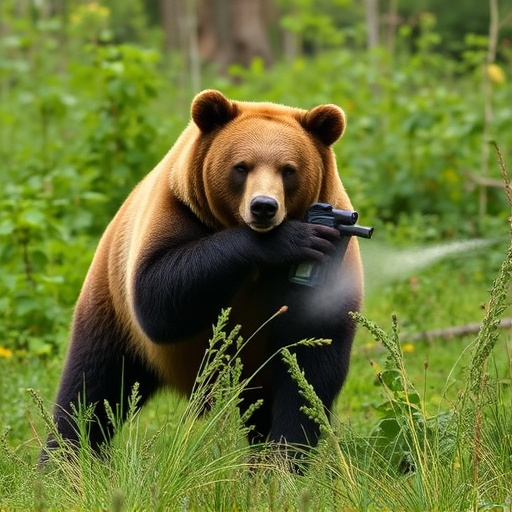Grizzlies are unpredictable, so understanding their body language and adhering to TSA rules for bear spray is crucial for safety in bear country. Effective strategies include recognizing defensive charges, aiming for the face and eyes with spray, practicing usage safely, and employing non-spray tactics like making yourself appear larger or using noisemakers to deter bears without escalation. Following TSA guidelines ensures legal carry of bear spray, providing peace of mind for hikers, campers, and outdoor enthusiasts.
In wild, untamed landscapes, encountering a charging grizzly bear can be a terrifying reality. Understanding these formidable creatures and their behavior is crucial for wilderness safety. This article explores effective strategies for defense against aggressive bears, focusing on the critical role of TSA rules for bear spray. We’ll delve into bear charge patterns, alternative defenses, and expert tips to ensure your survival in bear country.
- Understanding Grizzly Bear Behavior and Their Charge Patterns
- The Role of Tsa Rules for Bear Spray in Wilderness Safety
- Effective Strategies Beyond Bear Spray for Defending Against Charging Bears
Understanding Grizzly Bear Behavior and Their Charge Patterns
Grizzly bears are powerful and unpredictable animals, and understanding their behavior is crucial for anyone venturing into their wilderness habitat. When a grizzly bear charges, it’s often a defensive reaction rather than an aggressive one. They may charge when they feel threatened or surprised, especially if they have cubs nearby. Recognizing the subtleties of a bear’s body language can provide valuable insights into their intentions. For instance, a rolling, growling, or snarling bear might be preparing to attack, while a charge with raised legs and relaxed posture could indicate mere playfulness, particularly in younger bears.
Familiarizing yourself with the Tsa Rules for Bear Spray is essential for defense against charging grizzlies. Bear spray is a powerful deterrent that can temporarily incapacitate a bear, giving you time to retreat or escape. Proper usage involves aiming for the bear’s face and eyes, as this area contains many sensory receptors. It’s important to practice using bear spray in safe environments before relying on it in an emergency situation.
The Role of Tsa Rules for Bear Spray in Wilderness Safety
When venturing into wilderness areas known for grizzly bear populations, understanding and adhering to TSA rules for bear spray is paramount for safety. The Transportation Security Administration (TSA) regulations govern what types of bear spray can be carried on flights and in public spaces, ensuring that these potent defensive tools meet specific criteria for effectiveness and safety. This standardization plays a crucial role in empowering hikers, campers, and outdoor enthusiasts to protect themselves against unexpected bear encounters.
Adhering to TSA rules allows individuals to carry legal, non-prohibited bear spray while traveling or in wilderness settings. These regulations ensure that only reliable, approved products make it through security checks, providing users with peace of mind and a vital tool for self-defense against aggressive bears. By knowing and following these guidelines, outdoor adventurers can maximize their safety and enjoy their time in nature without constant fear of potential bear interactions.
Effective Strategies Beyond Bear Spray for Defending Against Charging Bears
When it comes to defending against charging grizzly bears, bear spray is often the first line of defense recommended by experts and the Tsa Rules for Bear Spray. However, there are several effective strategies beyond bear spray that can significantly enhance your safety in bear country. Knowing the right moves during an encounter can mean the difference between a close call and a potentially fatal outcome.
One crucial strategy is to make yourself appear larger and more intimidating. By raising your arms, opening your jacket, or even shouting loudly (without breathing directly from your mouth), you can deter a bear from charging further. Additionally, playing dead is often not recommended as it may trigger the bear’s predatory instincts. Instead, back away slowly while facing the bear, giving it ample space to retreat. Using noise makers like bells or whistles designed for bears can also help create distance without escalating the situation.
In understanding grizzly bear behavior and utilizing effective defense strategies, including adherence to TSA rules for bear spray, individuals can enhance their safety in wilderness environments. Beyond bear spray, knowing how to navigate and respond to a charge provides crucial tools for self-preservation. Combining these measures ensures a more robust defense against these powerful animals, making outdoor adventures in bear country safer and more enjoyable.
